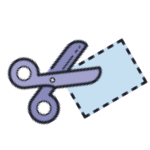Chuck D. Bones
Circuit Wizard
Gator and I were discussing a couple of fuzzes he wanted to modify and I noticed that they had a similar topology to the Skreddy Holy Trinity: Lunar Module, Screw Driver and Hybrid Fuzz Driver. So I breadboarded the HFD and started making mods. Here's the result. It's got six, count 'em, six knobs! And they all do something good. I went back to a BJT input stage because it interacts well with the guitar. Very responsive to the Volume knob. I kept the HFD's MID BOOST knob, renaming it GAIN. As GAIN is turned up, the mids become more and more focused. Some component value changes give the FUZZ control more range. I added a cut-only MID control, a pair of buffers (Q4 & Q5) and a BMP-style TREBLE control that provides both cut and boost in the treble range. I've tried both AC127 & MP38A for Q3. They both work well. In a pinch, a low-gain Si tranny will work there too.

The 1st stage is at the bottom right. 2nd stage (Q2 & Q3) is top right. Q3 is an MP38A. Bias Trim is to the left of Q3. MID circuit and Q4 buffer are top center. Q5 and TREBLE circuit are top left. Spare AC127 is bottom center. Note how I use short jumpers to restrain the long wires.
Knobs (L-R): LEVEL - TREBLE - MID - BASS - FUZZ - GAIN

I'm working on a better pedal name...

The 1st stage is at the bottom right. 2nd stage (Q2 & Q3) is top right. Q3 is an MP38A. Bias Trim is to the left of Q3. MID circuit and Q4 buffer are top center. Q5 and TREBLE circuit are top left. Spare AC127 is bottom center. Note how I use short jumpers to restrain the long wires.
Knobs (L-R): LEVEL - TREBLE - MID - BASS - FUZZ - GAIN

I'm working on a better pedal name...
Last edited:



